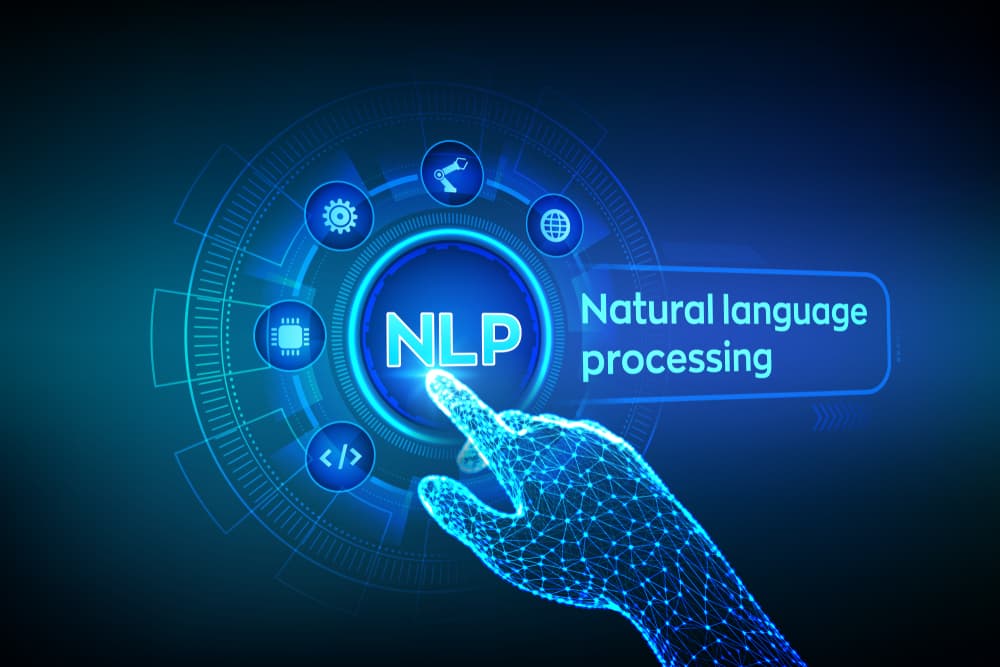The Role of Natural Language Processing in AI: You Must Know!

Artificial Intelligence (AI) is one of those topics that seems to be everywhere. One of the most talked-about aspects of AI today is Natural Language Processing. Natural language processing has been around for a long time, but it’s now seeing an explosion in use as people and businesses start to take advantage of its capabilities. In this blog post, we’ll discuss Natural Language Processing in AL and how you can use it for your projects!
-
Natural Language Processing
Natural language processing (NLP) is a field of computer science that focuses on the interactions between computers and human languages. It’s based on building software that can understand, analyze, generate and synthesize our natural modes of communication: speaking, writing, and thinking in an unstructured way. This means understanding spoken words as well as written text, and being able to use that understanding to predict the style of language used.
NLP looks at how Natural Language Processing can be applied more broadly; for example, Natural Language Generation (NLG) is about building software that can generate written content on demand. NLG has applications across many industries including finance, business intelligence, and even journalism. Natural Language Understanding (NLU) is also important as it can be used to help software gain a deeper understanding of user requests and commands.
NLP has been around for over half a century, but we’re only now starting to see major investment into Natural Language Processing from companies like Google and Microsoft. This increased attention means that the tools available to Natural Language Processing developers are becoming more comprehensive and easier to use. The rise of the internet, including social media networks like Facebook and blog platforms such as WordPress means that we now communicate online far more than we ever did before; this is driving a major need for Natural Language Processing software.
-
Natural Language Understanding
Natural language understanding (NLU) is the process of extracting meaning from human input. In other words, it’s how a computer program can understand when you speak to it in English and respond with what you meant, rather than simply repeating your phrase back at you. NLU is one of the most fundamental components in Natural Language Processing.
NLU is often used as a foundation for Natural Language Generation, which we’ll discuss next! Natural Language Understanding is also a great example of NLP as it’s the application that has seen some of the biggest changes in AI over recent years.
NLU can be used to help software gain a deeper understanding not just for user requests, but also commands and queries too. This means that NLU is increasingly being applied across many different industries, including voice assistants like Siri or Alexa, automated customer service bots, and smart speakers.
One of the biggest Natural Language Processing applications of NLU is Natural Language Generation (NLG). Natural language generation is about building software that can generate written content on demand. This process involves taking an input source, typically a database or collection of data, then using Natural Language Generation to transform it into a narrative or organized set of results. A good example of Natural Language Generation is how Facebook shows you a news feed full of pictures and status updates from your friends after you log into their website.
-
Natural Language Generation
Natural language generation (NLG) is about building software that can generate written content on demand. NLG has applications across many industries including finance, business intelligence, and even journalism.
The goal of NLP is to be able to understand human language; the goal of Natural Language Generation is to be able to synthesize text. Natural Language Generation is often used in combination with Natural Language Understanding; the NLU component can “understand” what you want written about, and the NLG component can generate that content for you.
Most examples of Natural Language Generation are quite impressive; however, they’re often the result of months or years of work involving complex Natural Language Processing.
There’s a reason why company newsletters and earnings reports take so long to be released; it’s because they require significant effort on part of an organization’s analysts and writers to create relevant, well-written, and timely content.
-
Natural Language Interfaces
Natural language interfaces (NLI) are becoming increasingly common in the technology world. Examples include Apple’s Siri, Google Assistant, and Amazon Alexa. Natural Language Processing is how these systems work behind the scenes to understand what you’re saying so they can respond with relevant information or actions!
As Natural Media continues to grow in popularity (and become more widespread), NLP will become increasingly important. Natural language interfaces may be one of the best ways to interact with your content in the future!
-
Natural Language Interaction
Natural language interaction (NLI) is a sub-field of Natural Language Processing where the goal is to build software that can understand and converse with humans. NLI has huge potential implications for future technology trends, especially as AI continues to improve!
One example of Natural Language Interaction in action is ELIZA; this simple Natural Language Processing program was created in 1966 and could hold short conversations with people. This is an early example of Natural Language Understanding, which we’ll discuss next!
Conclusion
As we’ve seen, Natural Language Processing in AI is a very broad field with many different applications. The most common examples of Natural Language processing are chatbots and voice assistants such as Siri or Alexa; however, as the AI industry continues to grow and expand, there will be more and more opportunities for talented NLP professionals!




jeff
Hi, unfortunately, I faced challenges with the slow loading speed of your website, leading to frustration. I recommend a service, linked below, that I’ve used personally to significantly improve my website speed. I really love your website…